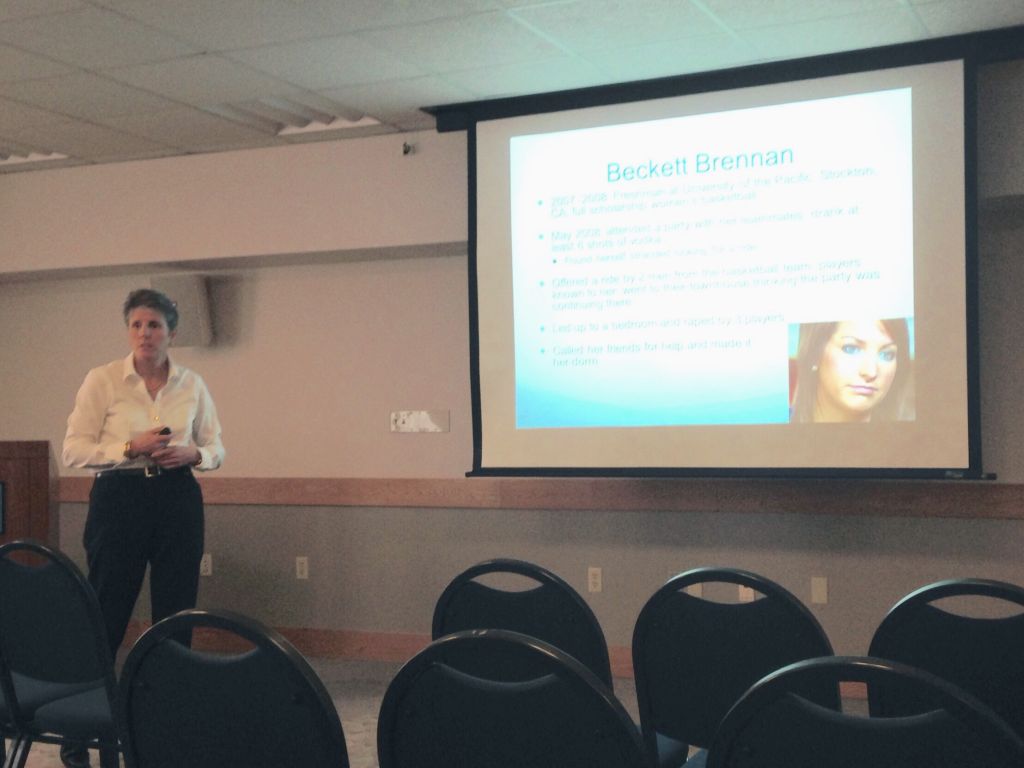
A detective who has worked in the Montgomery County District Attorney’s office for over 20 years thinks that the bystander is an important aspect of any sexual assault case.
“We get the victims, we get the bully, but how many people would understand the bystander [of sexual assault],” said Mary J. Anders, who has worked with many child abuse cases and sexual assault investigations as well as internet safety issues.
Anders discussed what sexual violence is, how to recognize inappropriate behavior, skills for direct and indirect intervention, a bystander’s point of view and social media considerations.
The presentation where Anders spoke about these issues was part of an evaluation where she spoke as one of the two candidates for a Public Safety Investigator and Education Coordinator position, which was held on Wednesday, May 11, at 1:30 p.m. in the Grace Hall Boardroom.
One aspect that Anders discussed was the forms of rape and how the definition has changed over the years, comparing and contrasting touching to the actual intercourse itself.
“If your hands are there [without consent], we’re going to charge you,” Anders said.
Another important aspect was on the individuals who commit these crimes. Anders said that 90 percent of the time sexual violence occurs with someone the victim knows or has known.
“We all know [the scenario] when a guy jumps out of the woods and there’s force, that’s easy,” Anders said. “What we don’t always think about is this part: when a person knows [the individual committing the assault] and is completely unaware that it is occurring.”
Are they able to give consent? What is the level of their consciousness? These are all important questions that come into play, since 75 percent of these cases occur on college campuses and less than two percent of these reports turn out false, college parties with large consumptions of both alcohol and substances play a pivotal role in the awareness and prevention of rape cases.
The last important aspect suggested the ways to intervene in serious cases while other people may not be aware that assaults are occurring while in a party or public setting. This can be accomplished by causing distractions like turning off the music, turning on the lights or even asking the victim if they would like to go to the bathroom to talk about it and hear their side of the story.
The last thing that Anders covered was tips on what to do in certain situations. Some of these tips were to believe the individual and act as a support system, encourage the person to report the incident, don’t judge and do not post on social media. If something of the sort is posted on social media, screen shot or take a picture of the image while not responding or becoming a part of the conversation, avoid violence and alert authorities.


